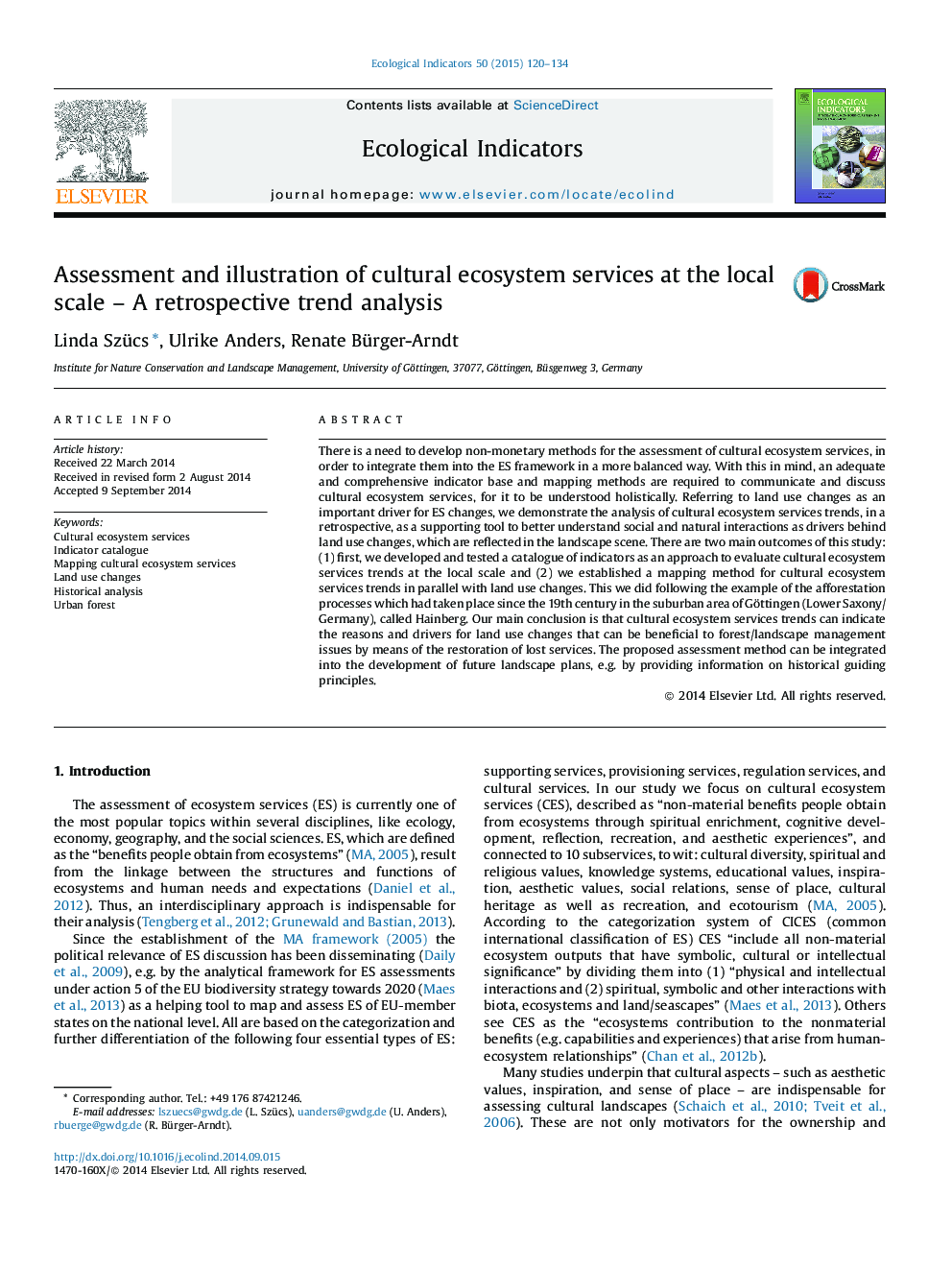| Article ID | Journal | Published Year | Pages | File Type |
|---|---|---|---|---|
| 6294758 | Ecological Indicators | 2015 | 15 Pages |
Abstract
There is a need to develop non-monetary methods for the assessment of cultural ecosystem services, in order to integrate them into the ES framework in a more balanced way. With this in mind, an adequate and comprehensive indicator base and mapping methods are required to communicate and discuss cultural ecosystem services, for it to be understood holistically. Referring to land use changes as an important driver for ES changes, we demonstrate the analysis of cultural ecosystem services trends, in a retrospective, as a supporting tool to better understand social and natural interactions as drivers behind land use changes, which are reflected in the landscape scene. There are two main outcomes of this study: (1) first, we developed and tested a catalogue of indicators as an approach to evaluate cultural ecosystem services trends at the local scale and (2) we established a mapping method for cultural ecosystem services trends in parallel with land use changes. This we did following the example of the afforestation processes which had taken place since the 19th century in the suburban area of Göttingen (Lower Saxony/Germany), called Hainberg. Our main conclusion is that cultural ecosystem services trends can indicate the reasons and drivers for land use changes that can be beneficial to forest/landscape management issues by means of the restoration of lost services. The proposed assessment method can be integrated into the development of future landscape plans, e.g. by providing information on historical guiding principles.
Related Topics
Life Sciences
Agricultural and Biological Sciences
Ecology, Evolution, Behavior and Systematics
Authors
Linda Szücs, Ulrike Anders, Renate Bürger-Arndt,
